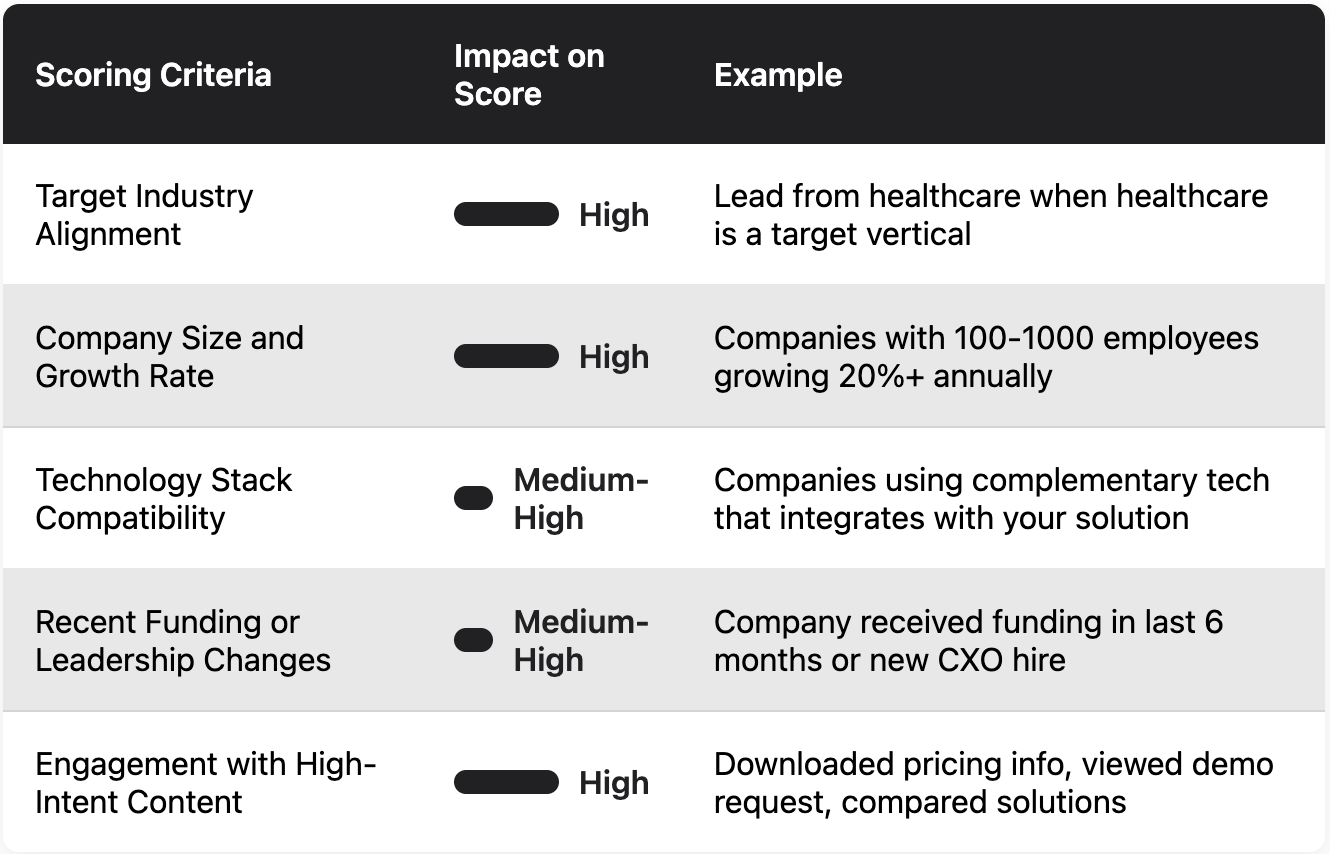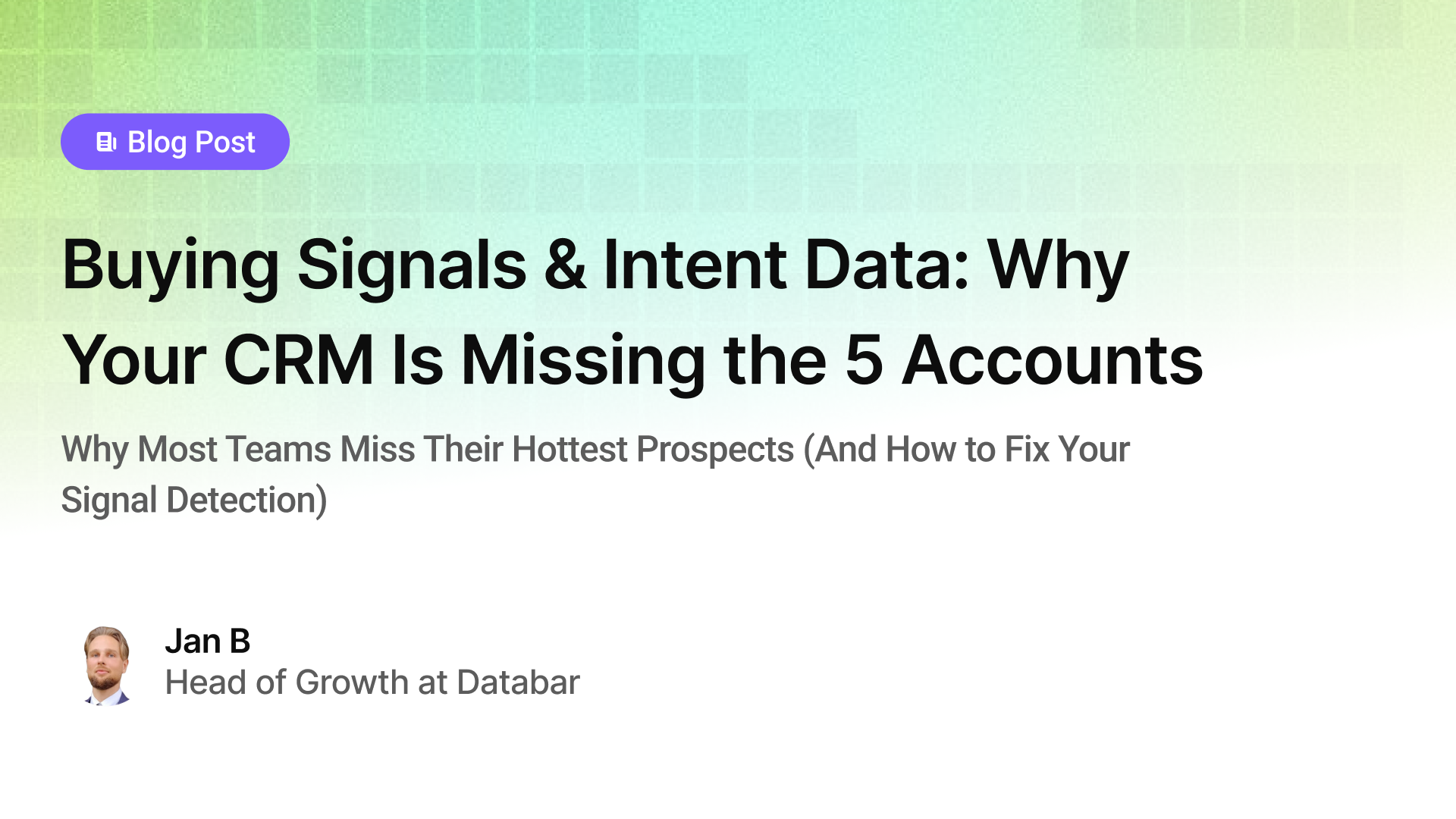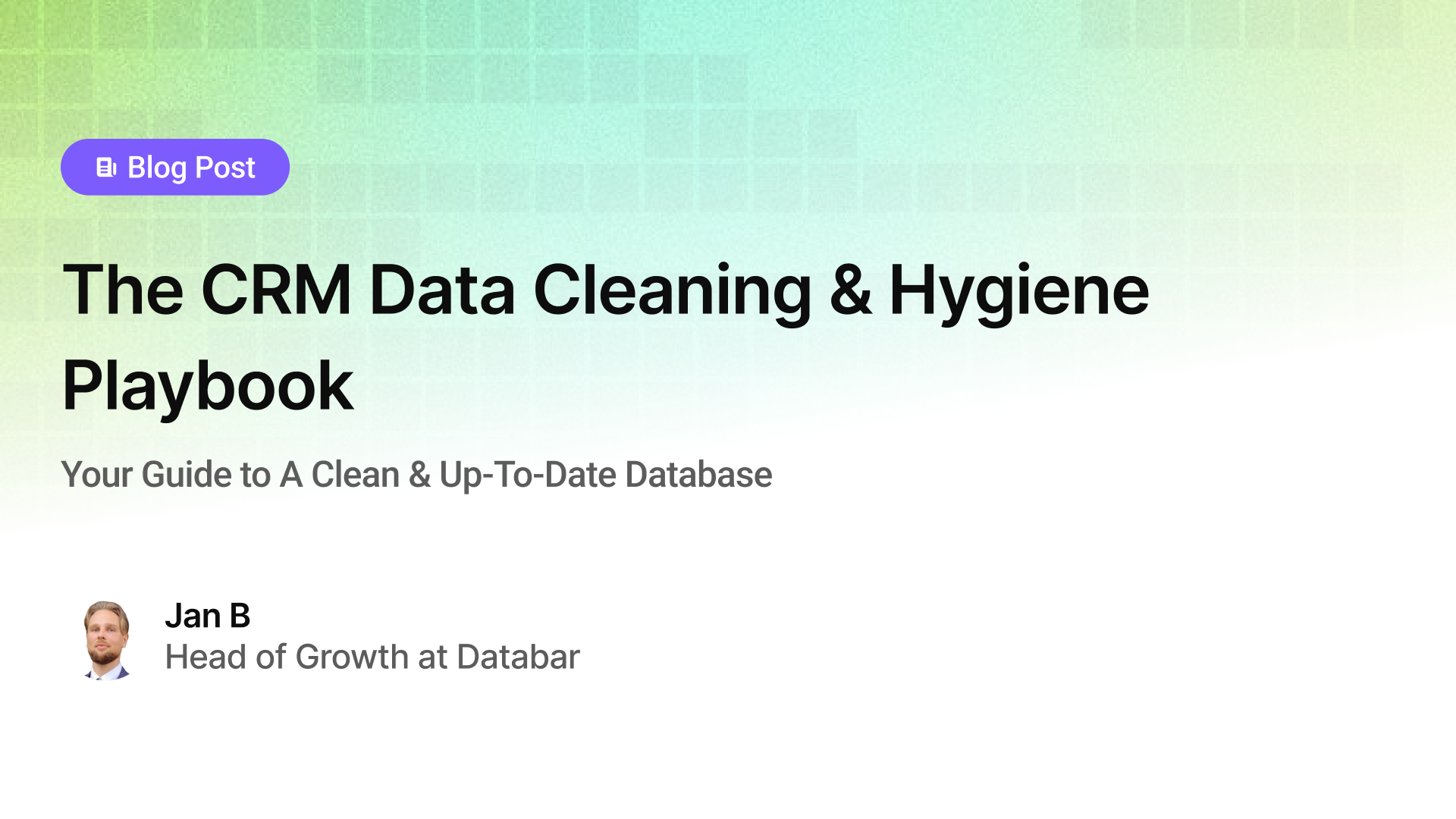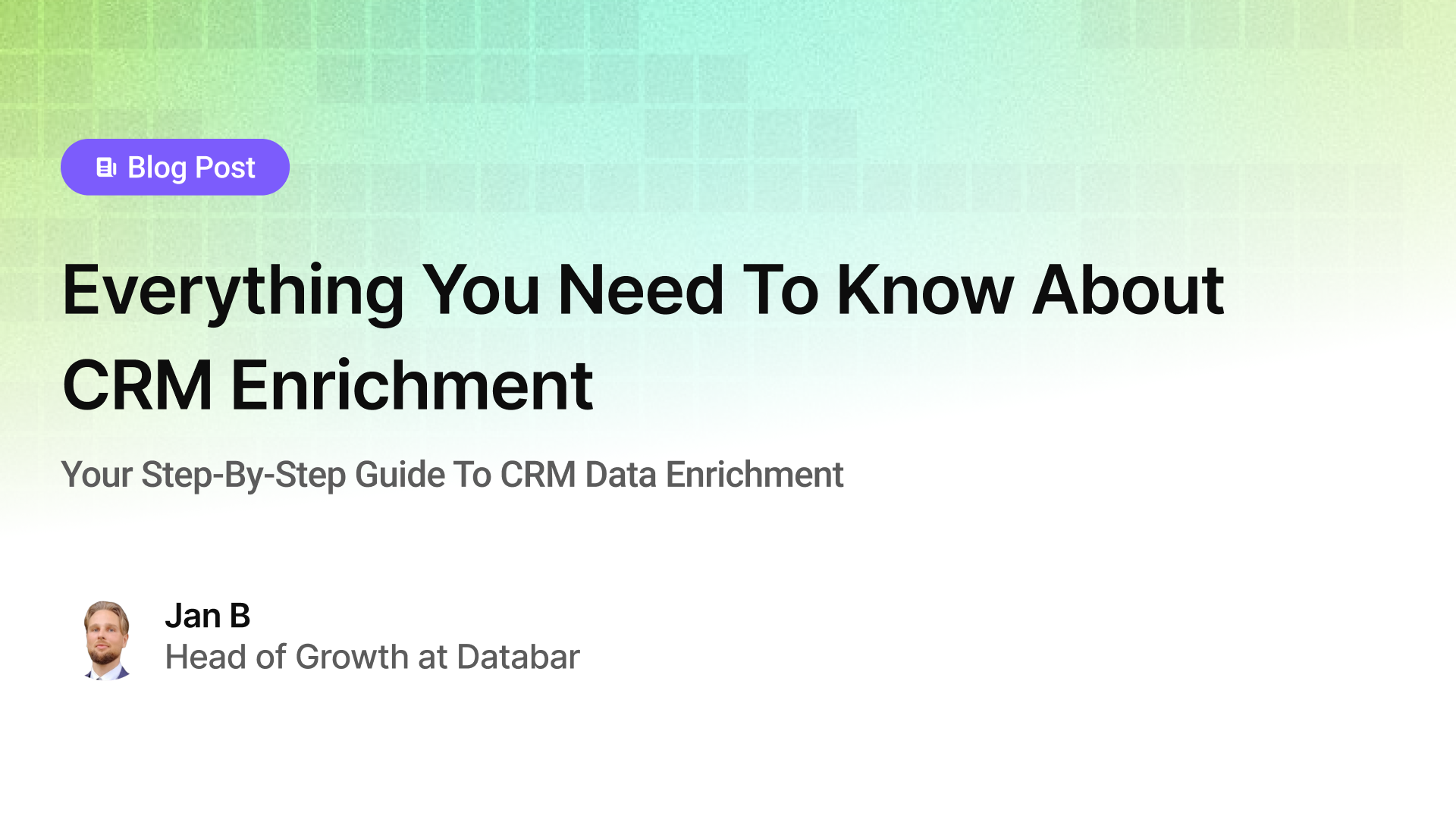Speed-to-Lead: What It Is, Why It Matters, and How to Increase It with Databar.ai (2025)
Improve your lead engagement time and close deals faster
Blogby JanApril 28, 2025

Speed-to-lead—how quickly your team responds to new leads—has emerged as one of the most critical factors separating high-performing sales organizations from the rest.
The statistics are staggering: After just five minutes, your odds of successfully connecting with and qualifying a lead drop by 80%. Even more concerning, 30% of your prospects will go to a competitor if you don't respond quickly enough.
Yet despite these compelling numbers, most companies still take hours or even days to respond to new leads. The average lead response time for website inquiries sits at a shocking 17 hours, while 55% of companies take longer than five days to respond to a new lead. In today's fast-paced market, this simply isn't acceptable.
This article will explore why speed-to-lead matters so much, the real challenges preventing faster response times, and how Databar.ai's data enrichment platform can transform your response workflow to connect with leads in minutes rather than hours or days.

Why Most Companies Struggle with Speed-to-Lead
If responding quickly is so important, why do most organizations still take hours or days to reach out to new leads? Several fundamental challenges stand in the way:
Manual Lead Processing and Research
The traditional lead handling process is riddled with time-consuming manual steps:
- Lead arrives in your CRM or form submission system
- Lead waits for someone to notice it
- Basic qualification happens (often manually)
- Research begins to understand the company and person
- Outreach preparation involves crafting a semi-personalized message
- Finally, contact happens—often days after the initial interest
Each of these steps introduces delay. Even dedicated sales teams struggle to maintain consistent response times when juggling multiple responsibilities and leads.
Insufficient Lead Context and Information
When a lead comes in, sales reps often lack the context needed to engage effectively. Basic form submissions might include just a name, company, and email address—hardly enough to craft a relevant, personalized response. This forces reps to spend precious time researching the prospect before reaching out, further delaying that critical first contact.
Poor Lead Routing and Assignment
Many organizations lack clear processes for routing leads to the appropriate team members. Without automated assignment rules, leads can sit in queues or general inboxes waiting for someone to claim them. This assignment confusion creates additional delays, especially for leads that arrive outside business hours or during busy periods.
Prioritization Challenges
Not all leads deserve the same level of urgency, but manually determining which ones need immediate attention is difficult without proper scoring and qualification systems. Sales teams waste valuable time evaluating leads that may not be worth pursuing while high-potential opportunities grow cold.
Implementing an Effective Speed-to-Lead Workflow
Achieving lightning-fast lead response isn't just about having the right tools—it's about implementing the right workflow. Here's a step-by-step guide to creating an optimized speed-to-lead process:

Step 1: Create a Data Enrichment Pipeline
Start by configuring your data enrichment tool like Databar.ai to automatically enhance every lead that enters your system. Set up connections to your primary lead sources, including:
- Website form submissions
- Chat interactions
- Event registrations
- Content downloads
- Demo requests
For each source, define the essential data points your team needs to respond effectively. Databar will automatically pull this information from multiple data providers the moment a lead arrives.
Step 2: Define Lead Scoring Criteria
Work with your sales team to identify the characteristics that indicate high-value, sales-ready leads for your specific business. Using your platform's interface, translate these into clear scoring instructions based on factors like:
- Target industry alignment
- Company size and growth rate
- Technology stack compatibility
- Recent funding or leadership changes
- Engagement with high-intent content
A good system will use these criteria to instantly evaluate and score new leads, creating clear prioritization for your team.

Step 3: Establish Routing Rules and SLAs
Define clear rules for who should handle each type of lead, considering factors like:
- Geographic territories
- Industry specialization
- Product expertise
- Language requirements
- Existing relationships
Then establish service level agreements (SLAs) for different lead scores:
- Critical leads (90+ score): Response within 5 minutes
- High-value leads (70-89 score): Response within 30 minutes
- Medium-value leads (40-69 score): Response within 2 hours
- Nurture leads (<40 score): Response within 24 hours
Your system should automatically route leads to the appropriate team members and track adherence to these SLAs.

Step 4: Create Contextual Response Templates
Develop a library of response templates for different lead scenarios, incorporating personalization tokens that can be automatically populated with enriched data. For example:
"Hi {First_Name},
Saw {Company_Name} has been expanding your {Technology_Category} stack recently with {Recent_Tech_Implementation}. Many organizations in {Industry} find this creates challenges with {Common_Industry_Pain_Point}.
I'd love to share how we've helped similar companies address these exact issues, resulting in {Typical_Value_Proposition}.
Worth exploring?"
These templates ensure consistent, relevant outreach while saving valuable response time.
Step 5: Implement Multi-Channel Follow-Up Sequences
Configure your engagement tools to orchestrate follow-up sequences across multiple channels if the initial outreach doesn't receive a response. A typical sequence might include:
- Initial email within minutes of lead submission
- LinkedIn connection request after 2 hours
- Phone call attempt after 4 hours
- Second email with additional value content after 1 day
- Final follow-up after 3 days
This multi-channel approach maximizes your chances of connecting while the lead's interest is still fresh.
The Future of Speed-to-Lead: Beyond Initial Response
While immediate response remains critical, the future of speed-to-lead is expanding to encompass the entire early-stage buyer journey. Modern platforms are evolving with capabilities that extend beyond just that first contact:
Intelligent Conversation Acceleration
Next-generation speed-to-lead isn't just about responding quickly—it's about moving conversations forward intelligently. Advanced systems can identify signals that indicate buying momentum and suggest appropriate next steps to maintain velocity, such as:
- When to introduce case studies based on expressed concerns
- The right time to involve technical specialists in the conversation
- Optimal moments to discuss pricing and commercial terms
- When leadership involvement would accelerate the process
This intelligence helps prevent promising conversations from stalling after initial interest.
Buying Committee Mapping and Engagement
B2B purchases typically involve multiple stakeholders. Advanced speed-to-lead processes must identify and engage the entire buying committee quickly. Modern tools can automate the discovery of additional stakeholders and orchestrate parallel engagement to build consensus faster.
These systems identify potential committee members by analyzing organizational structures, recent hiring, and internal relationships, then suggest personalized outreach strategies for each role.
Automated Meeting Preparation
The time between scheduling a meeting and having the conversation represents another critical speed opportunity. Modern tools can automate comprehensive meeting preparation by:
- Compiling relevant company news and developments
- Identifying social content engagement from the prospect
- Analyzing recent product usage data (for product-led motions)
- Preparing talking points tailored to the prospect's situation
This intelligence ensures every moment with the prospect advances the relationship rather than covering basics that could have been prepared in advance.
Conclusion: Speed as a Competitive Advantage
In today's hyper-competitive business environment, speed-to-lead has evolved from a nice-to-have to a fundamental competitive advantage. The data is clear: responding to leads within minutes rather than hours or days can literally double your chances of successfully engaging prospects and winning their business.
Modern data enrichment and automation tools provide the missing link that makes true speed-to-lead possible—instantly enriching leads with comprehensive data, intelligently scoring and routing them to the right team members, and providing the context needed for relevant, personalized engagement within minutes of initial interest.
By implementing an advanced speed-to-lead workflow, you're not just improving a metric—you're fundamentally transforming how your organization engages with potential customers at the most critical moment in their buying journey. In a market where attention spans are short and competition is just a click away, that transformation can make all the difference between winning the deal and wondering why your prospects went silent.
The question isn't whether you can afford to improve your speed-to-lead—it's whether you can afford not to. Get started with Databar today!
Related articles

Buying Signals & Intent Data: Why Your CRM Is Missing the 5 Accounts
Why Most Teams Miss Their Hottest Prospects (And How to Fix Your Signal Detection)
by Jan, October 06, 2025

Lead Scoring & Account Segmentation: Why Most CRMs Get This Backward (And How to Fix It)
How to build a system that tells your team who to call, when, and why
by Jan, October 06, 2025

The CRM Data Cleaning & Hygiene Playbook
Your Guide to A Clean & Up-To-Date Database
by Jan, October 04, 2025

Everything You Need To Know About CRM Enrichment
Your Step-By-Step Guide To CRM Data Enrichment
by Jan, October 03, 2025